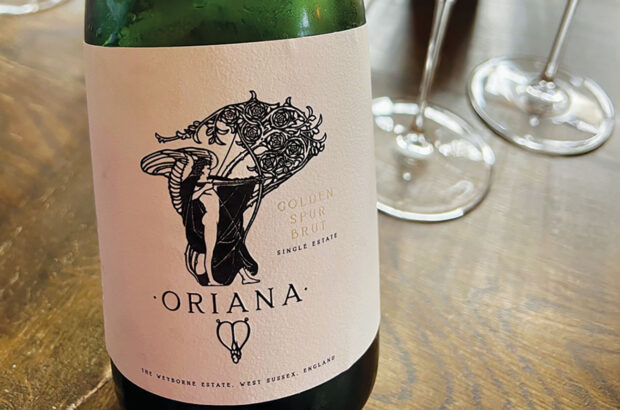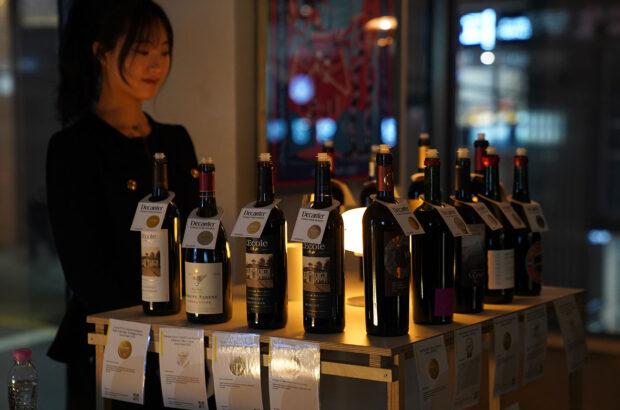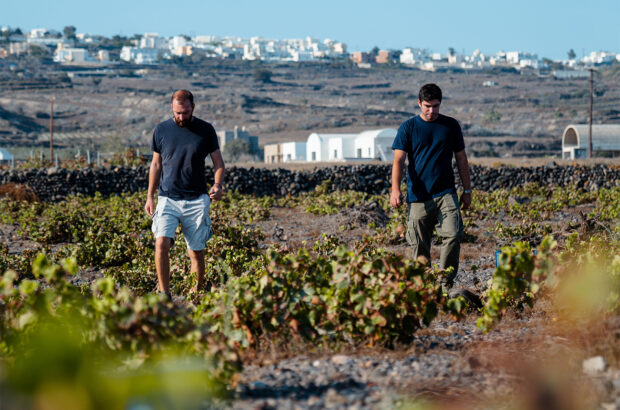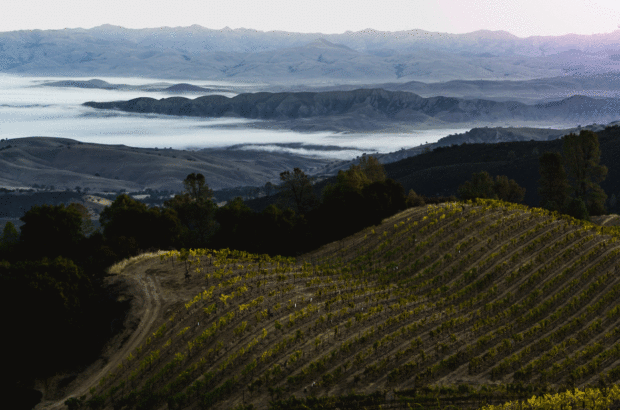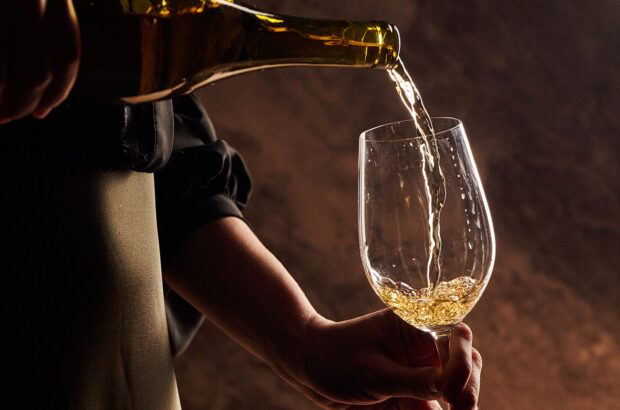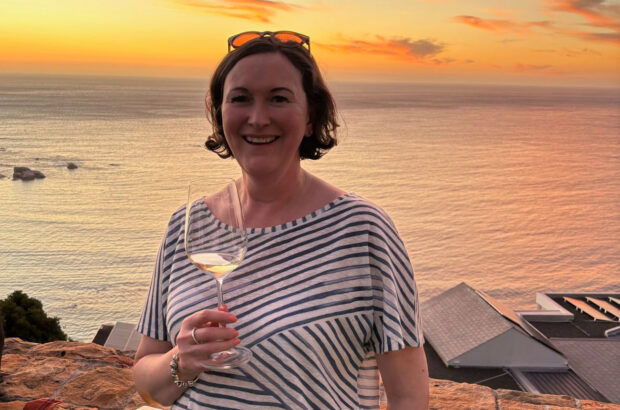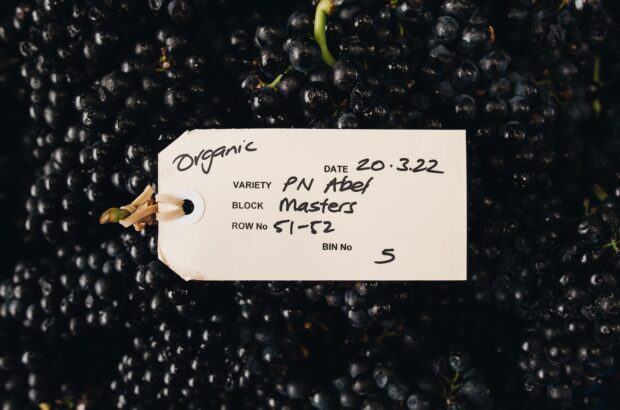The first time many visit Rioja, they’re not entirely sure what to expect. Neatly terraced vineyards as far as they eye can see? Wine routes adorned with tasting rooms and flashy hotels? In truth, Rioja is a lot more down to earth than that. Home though it is to some of Spain’s greatest wines and some truly brilliant restaurants.
The waves of slopes and small hills that adorn the region dispel any idea of ‘neat’, though to see them in full bloom is still quite remarkable. From the cooler north of Rioja Alavesa, to the warmer south of Rioja Oriental (in the region’s southeast), there is little uniformity; more of an understated, shifting ruggedness. Think ‘Montana meets Spanish wine country’, interspersed with beautiful villages, pierced by the mighty Ebro river and framed by the Sierra de Cantabria mountains. This is the great outdoors with a hefty dose of fine wine and excellent food. From horseback riding to hiking, tapas and pintxo routes and stunning natural parks, there’s a lot more to see and do in Rioja than first meets the eye.
Rock climbing in Rioja Alta
In the north of Rioja, altitudes rise and the weather becomes noticeably cooler, the landscape noticeably greener. Limestone cliffs rise out of the terrain, and small, dense forests are commonplace, uninterrupted by the vineyards that spread across this beautiful landscape. This is the perfect place to learn how to rock climb, and Grape Aventura – based between Haro and Ollauri, and no strangers to combining outdoor activities with winery visits – has the perfect course to teach you how to do just that.
Once you’ve mastered the basics of climbing and find yourself at the top of a small bluff, you’ll be rewarded with the most stunning, panoramic views of the region – the sort of view that can’t be purchased with an expensive cocktail in a high-rise hotel – and you’ll have earned it!
This could be done as a day trip from either Haro or Logroño, but another option would be to stay overnight and truly combine it with a winery experience, such as Hotel Villa de Abalos in the wine-centric town of the same name. Coming back from a hard morning’s rock climbing, freshening up and then having the afternoon to enjoy a long, leisurely lunch with plenty of wine? Sign me up.

Never mind the vines, there’s no shortage of rocks and mountains to be climbed in the Rioja region. Credit: Adie Bush / Getty Images
Rioja on horseback
If the scenery of Rioja invites comparisons to some of the most ruggedly beautiful places in the world, there’s also the opportunity to explore it in a similarly old-fashioned way. One of the beautiful things about wine country is that, harvest time aside, roads are relatively traffic-free, and there are many off-road trails that are easily navigable and give you an entirely different perspective on the region than could be achieved by driving around it. Rioja Like a Native is an oenotourism business run by Rebeca Perez, who believes exactly that, and organises many ways to experience a different side of Rioja while learning all about its history, culture and, of course, wine production.
Among other activities, small groups of horses are available to hire with an expert guide, who will lead you on a route across Rioja Alta, with two winery visits punctuating the ride. There’s something lovely about traversing the region in the same way that the locals did for centuries, while diving into that very same history and culture. Pick-up and drop-off at your hotel or accommodation is also included, so no need to worry about the logistics!
Getting around Rioja
Travelling to Rioja is easy, though it has no international airport of its own, the closest being in Bilbao, from where you can either make your way to the region’s main cities Haro or Logroño, which will take roughly 1.5 hours by car or 2.5 hours by train. However, hiring a car is strongly recommended, either in Bilbao, San Sebastián (depending on your route) or in Rioja itself. Most of the truly interesting locations, outside Haro and Logroño, require a car to access, and private vehicle hire will be difficult and expensive.
Where relevant, we’ve made some recommendations for accommodation here, but it’s possible to find stunning boutique hotels, bed & breakfast and rural houses in many of the towns and villages of Rioja. Haro and Logroño remain the most densely populated areas and both make for excellent bases, but if you’re looking for something a little more off-the-beaten-track, then follow the advice in this article.

Credit: JP Map Graphics Ltd
Sierra Cebollera national park
There will be moments when you want to disconnect from wine completely, and for that there’s no better place than the Parque Natural de la Sierra de Cebollera, a range of mountains to the south of Logroño designated a national park, and with good reason. This part of Spain is the tail end of what’s known as ‘Green Spain’ – the cool winds and rain brought from the northerly Atlantic ocean aren’t as significant as in Galicia, further west, but are enough to create an incredible landscape, rich in biodiversity and life. The park begins at Villoslada de Cameros, a short drive south on the N-111 from Logroño, and then spreads out across almost 24,000 hectares of incredible green hills, forests and fields.
Various walking routes are available, from a gentle 6km with a 200m elevation gain, to an arduous 24km walk with more than 600m of elevation gained during the route. You’ll find yourself passing through dense forests of Pyrenean oak trees, pine and birch, past waterfalls and areas intensely packed with local flora and fauna. Crossing streams and rivers, you’ll sometimes wonder whether you’re in Spain or the Lake District. A perfect daytime itinerary before exploring the gastronomic scene of Logroño at night – you’ll have earned the pintxos.

The village of Ezcaray nestles in the Oja valley at the foot of the Sierra de la Demanda mountains. Credit: James Sturcke / Alamy Stock Photo
Rioja Oriental
The most southerly of the sub-regions of Rioja, Rioja Oriental is its largest and least densely populated. As a result, this is often new territory even for those who have visited Rioja before, and is home to some of its most stunning scenery. It was among the prime vineyard locations for the ancient Romans and there are various sites that still preserve the original stone lagares that were once used for some very rudimentary winemaking!
First of all, you’re going to need accommodation and I can’t recommend Posada de Urreci highly enough: a gorgeous rural house located on the edge of the village of Aldeanueva de Cameros. You’ll need a car to strike out into the heart of Rioja Oriental, but coming home will be as much of a pleasure as the adventures themselves. The natural beauty of the Cuevas de Ortigosa de Cameros caves is a short journey west (just back into Rioja Alta territory) – an ancient rock formation only accessible by crossing an iron bridge, and the only accessible caves of their kind in Rioja. Bring something warm to wear, even in the summer!

Ortigosa de Cameros caves are right by the González Lacasa reservoir
From here, it’s a short drive to the El Rasillo nautical club, on the waters of the González Lacasa reservoir, for an excellent lunch and then maybe an afternoon of sailing, windsurfing or just enjoying the view and the tranquility of the water. If you still have time, a visit to Aldeanueva de Ebro is essential – a beautiful village that also has one of Rioja’s most important wine museums (check ahead for opening times). It’ll be a busy day, certainly, but a truly unique one.
High-jinks in Rioja
If the above options haven’t satisfied your need for adventure and discovery, then consider a visit to Ojapark, the ultimate outdoor club in Rioja. With an obstacle course, paintballing, waterslides, climbing wall, archery course, mini-golf, even a go-karting track, there’s something for everyone here, and guided activities can be booked for groups if team-building is your goal. There’s a large picnic area outdoors and a prepared picnic basket can be prepared if you’d like. Best of all, it’s located on the road west of Logroño (take the A-12 to Santo Domingo de la Calzada and turn south), en route to the town of Ezcaray, one of Rioja’s most charming towns, set against a stunning backdrop of the Oja valley in which it sits.
Ezcaray is also home to arguably the region’s greatest restaurant, the Michelin two-star El Portal de Echaurren and its associated hotel. After all the journeys around Rioja, a little bit of luxury might just be the ideal way to round things off.
Let your hair down
If there’s one thing the Spanish know how to do, it’s throw a good party. Rioja, like most regions in Spain, has culturally important celebrations throughout the year that are typically only known within the region itself. They tend to take place from spring through to autumn, though there’s so very many it’s hard to keep track! Each village has its own events, and the following are just some of the most notable. If your trip coincides with one, it’s well worth going to see for yourself…
Alava olive oil festival
Spain is by far the world’s largest producer of olive oil (reported at 1.38m tonnes for the 2024-25 season by Olive Oil Times in February), and Rioja has its part to play with the highly regarded Arroniz olive, which is unique to the region. Taking place in late March, the Feria del Aceite de Oliva de Alava is a celebration of all things related to olives; guided tastings, visits to producers, good food and of course, good olive oil. It takes place in Moreda de Alava, Lanciego and Oyón.
The dancers of Anguiano
One of the most popular festivals in Rioja, this tribute to Mary Magdelaine involves eight men wearing colourful costumes and walking on stilts; very dramatic! This street festival brings out the crowds who want to socialise, drink and enjoy the bright spectacle as it parades through the streets of Anguiano. Look for this in May, July and September.

The dancers in the small town of Anguiano, south of Nájera, Rioja Alta. Credit: Lumir Pecold / Getty Images
Haro wine festival
The most famous festival of Rioja and with good reason; the Batalla del Vino is as much fun as it sounds. Technically this begins on 23 June, but the real climax and fun is on the morning of the 29th, with more than 1,000 revellers dousing one another with wine, before returning to Haro to continue the revelry. Needless to say, wear clothes you don’t mind disposing of afterwards!
Fiestas de San Mateo
Taking place in Logroño in mid-September, the festival of St Matthew is a celebration that dates back to the 12th century and celebrates the harvest, though in modern times this is often still well underway. It’s quite the spectacle, with Logroño packed full of street events, singing, dancing and good times. If you were ever looking for a week to be in Logroño, this would be the one.


